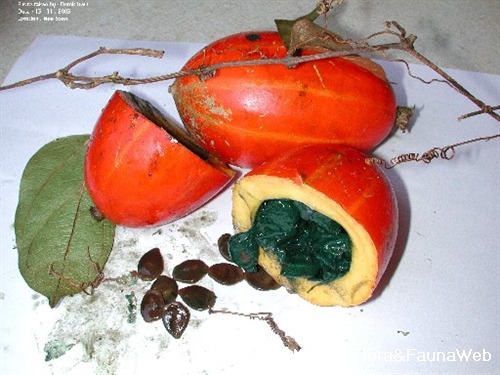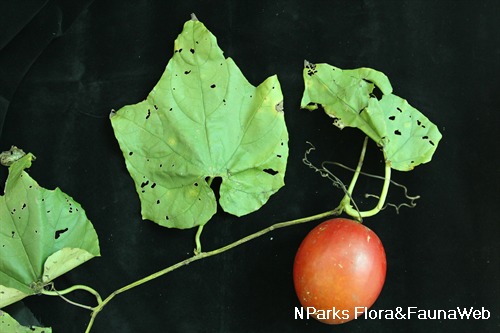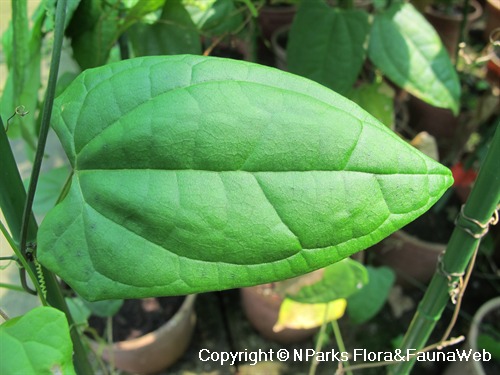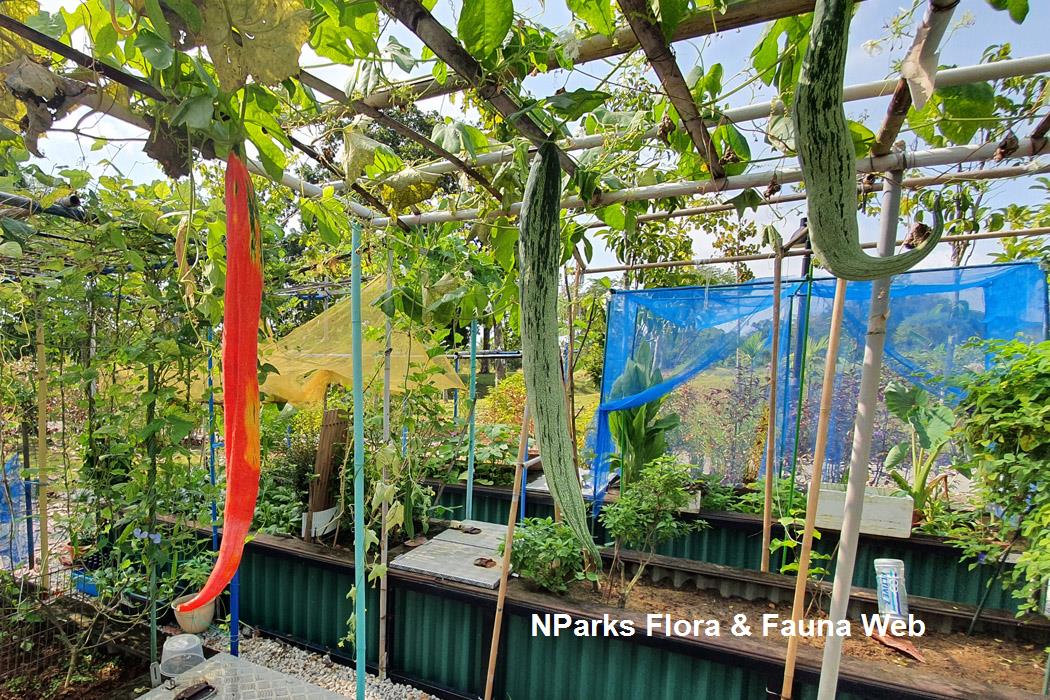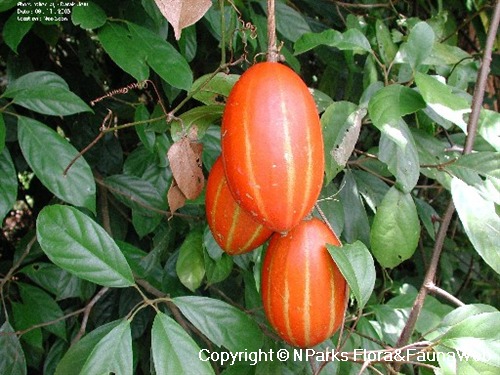
Back
Trichosanthes wawrae Cogn.
| Family Name: | Cucurbitaceae |
| Synonyms: | Trichosanthes wawraei Cogn. |
| Common Name: | Akar Cabang Tiga |
Name
Classifications and Characteristics
| Plant Division | Angiosperms (Flowering Seed Plants) (Dicotyledon) |
|---|---|
| Plant Growth Form | Climber |
| Lifespan (in Singapore) | Perennial |
| Mode of Nutrition | Autotrophic |
| Plant Shape | Irregular |
| Maximum Height | 10 m |
Biogeography
| Native Distribution | Thailand, Sumatra, Peninsular Malaysia, Singapore, Java, and Borneo |
|---|---|
| Native Habitat | Terrestrial (Primary Rainforest, Mountain, Secondary Rainforest, Freshwater Swamp Forest, Disturbed Area / Open Ground) |
| Preferred Climate Zone | Tropical |
| Local Conservation Status | Native to Singapore (Endangered (EN)) |
Description and Ethnobotany
| Growth Form | It is a unisexual or occasionally bisexual climber up to 10 m long. |
|---|---|
| Foliage | Its stalked leaves are either simple or trifolioliate, with membranous to papery leaf blades that are narrowly egg-shaped or elliptic, shallowly to deeply lobed, and 7–17 by 4.5–9 cm. The simple leaves grade into leaflets over time. Its middle leaflets are narrowly drop-shaped and 4.5–10 by 2–5 cm. |
| Flowers | Its male flowering shoots are 5–30 flowered. The white flowers are nocturnal and fragrant. Probracts (leaf-like structure) with glands are present at the base of flowers about 3–5 by 1.5–3 mm. |
| Fruit | Its fruits are egg-shaped, orange red with yellow stripes, and about 6–9 by 5–7 cm. Its ellipsoid or drop-shaped seeds are brown or black and up to 15 mm wide. |
| Habitat | It grows in primary, degraded, swamp or montane forests, up to 1700 m in altitude. |
| Associated Fauna | Its flowers are insect-pollinated. |
| Cultivation | It can be propagated by seed. |
| Etymology | Latin Trichosanthes, hairy flowers, referring to the flowers of some species of the genus. |
| Ethnobotanical Uses | Medicinal: Its pounded leaves can be applied to the abdomen for ague and abdominal pains. Its leaf juice has been used to treat paralysis and oedema. |
Landscaping Features
| Landscaping | It is suitable for parks, growing on trellises and pergolas. |
|---|---|
| Desirable Plant Features | Ornamental Foliage, Ornamental Fruits, Fragrant (Flowers) (Night) |
| Landscape Uses | Parks & Gardens, Trellis / Arbour / Pergola |
Fauna, Pollination and Dispersal
| Pollination Method(s) | Biotic (Fauna) |
|---|---|
| Seed or Spore Dispersal | Biotic (Fauna) |
Plant Care and Propagation
| Light Preference | Full Sun, Semi-Shade |
|---|---|
| Water Preference | Moderate Water |
| Plant Growth Rate | Moderate |
| Rootzone Tolerance | Moist Soils, Well-Drained Soils, Fertile Loamy Soils |
| Propagation Method | Seed |
Foliar
| Foliage Retention | Evergreen |
|---|---|
| Mature Foliage Colour(s) | Green |
| Mature Foliage Texture(s) | Papery |
| Foliar Type | Simple / Unifoliate, Compound (Trifoliate) |
| Foliar Arrangement Along Stem | Alternate |
| Foliar Attachment to Stem | Petiolate |
| Foliar Shape(s) | Non-Palm Foliage (Ovate, Elliptical, Palmate) |
| Foliar Venation | Pinnate / Net |
| Foliar Margin | Entire, Palmately Lobed |
Floral (Angiosperm)
| Flower & Plant Sexuality | Unisexual & Bisexual Flowers(Sub-dioecious) |
| Flower Colour(s) | White |
|---|---|
| Flower Grouping | Cluster / Inflorescence |
| Flower Location | Axillary |
| Flower Symmetry | Radial |
Fruit, Seed and Spore
| Mature Fruit Colour(s) | Orange, Yellow / Golden, Red |
|---|---|
| Mature Fruit Texture(s) | Leathery |
| Fruit Classification | Simple Fruit |
| Fruit Type |
References
| References | Lindsay, S. et al. (2022). Flora of Singapore: Checklist and bibliography. Gardens’ Bulletin Singapore 74(Suppl. 1): 3–860. |
|---|
Image Repository
Others
| Master ID | 228 |
|---|---|
| Species ID | 1524 |
| Flora Disclaimer | The information in this website has been compiled from reliable sources, such as reference works on medicinal plants. It is not a substitute for medical advice or treatment and NParks does not purport to provide any medical advice. Readers should always consult his/her physician before using or consuming a plant for medicinal purposes. |

